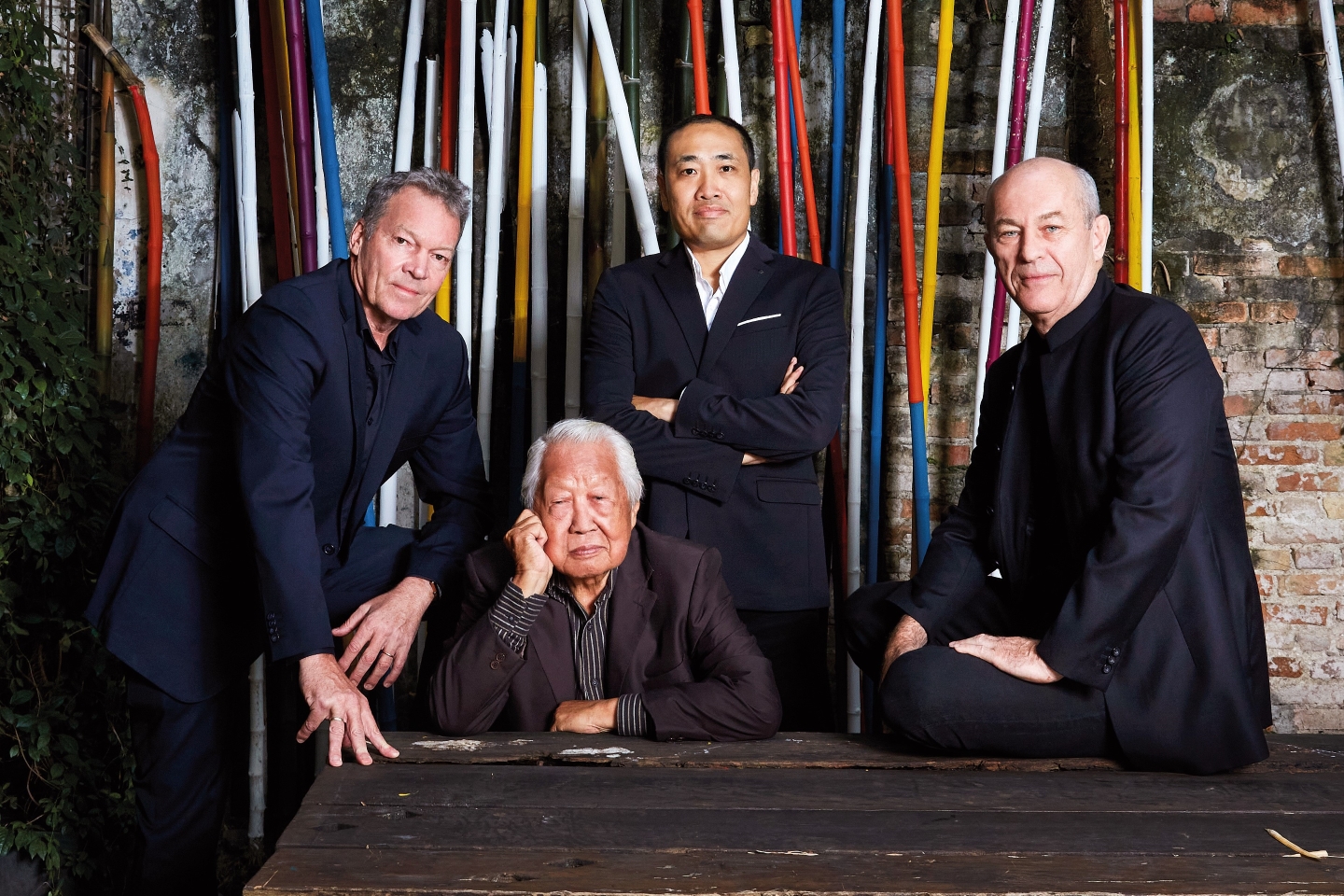
From left: Dall, Hijjas, Chong and Proud (Photo: SooPhye)
Renowned for their breathtaking structures and groundbreaking concepts, architects Hijjas Kasturi, Greg Dall, Nic Proud and Chong Chee Ching have seamlessly shaped the skylines of metropolises and the spaces where we live, work and dream. But what happens when they decide to trade their blueprints for brushes, and concrete for canvas?
The result is a visual symphony of passion and a fusion of art and architecture. For the fourth time, these masters of construction and design have come together to put their souls on display, not in towering edifices of steel and glass but on the humble canvas. This year, the 4 Sad Architects art exhibition takes on a new theme — Deconstruction of Forms.
“We are a group of close friends who happen to be well-known architects, not only in Malaysia but also Asia. Hijjas’ name goes before him. However, our true passion has always been in the realms of design, art, painting and sculpture. We have reached a stage in our careers where — with the exception of Chong, who is a bit younger — we find ourselves in the latter phase of our professional lives. It’s at this point that we decided to pursue our longstanding dream of becoming actual artists,” shares Dall, when met at Pentago House in Kampung Attap, Kuala Lumpur.
What fuelled this newfound passion is their ongoing collaboration with artists while working on various architectural projects, and all of them are trained in fine arts. “One day, we gathered at The Kasturi Resort owned by Hijjas on the East Coast. On display were works by renowned artists from across Asia. I was particularly drawn to three and enquired about the artist behind them. To my surprise, these were pieces he had created many years ago and he hadn’t painted since. That’s when I suggested, ‘Why don’t we start painting together?’”
nic_-_urbanism_1200mmx700mm.jpg
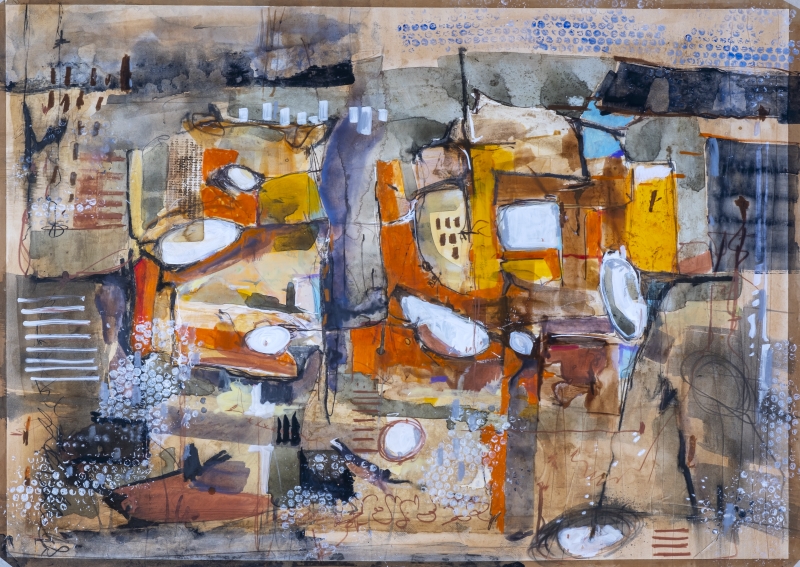
Four by four
The exhibition made its debut in 2019, and consistently, year after year, 4 Sad Architects has showcased and facilitated the sale of various art forms, including paintings, drawings, sculptures, videos and mixed media pieces created by the likes of Hijjas, Proud, Dall, Chong, Leon Moulton and Robert Powell.
“Why sad?” Proud, the managing director and lead designer of architectural interiors firm RDM Design, laughs. “To be honest, our families and lecturers (and not forgetting social pressure) always wanted us to pursue a sensible career, to become a doctor, lawyer or engineer, and being an architect was a better choice than artist. So, we dedicated ourselves wholeheartedly to this pursuit. However, it’s important to clarify that we have no regrets, as this choice has provided us with financial stability.”
And since they did not rely on selling art to make a living, they pursued art purely for the enjoyment of it.
They were pleasantly taken aback by the success of their first sold-out show, which sparked substantial curiosity in the art fraternity. However, they preferred to maintain a simple and selective approach. “Initially, there was some pressure from collectors expressing interest in attending our show and purchasing our work but by our third exhibition, we chose not to invite them and many other commercial buyers,” says Proud.
Nonetheless, they got wind of the event on the final Sunday and came, only to find most of the artworks sold. “We were urged to extend the show for another week or two, with constant requests for more pieces. So, for this coming exhibition, we are trying to keep a lid on it [for] all to enjoy our work.”
When the four men paint, they lose themselves in their craft. In the process of preparing for exhibitions, they would organise several sessions at Rimbun Dahan, Hijjas’ house and arts centre in Kuang, Selangor. Over the course of two days, they would paint, break bread, laugh and just have a great time together. Some of their finest work was created during these gatherings.
They come from different walks of life. “We’ve got an Englishman who is very English, a Chinaman who remains deeply connected to his roots, a Malay brother, and myself, who’s somewhat uncertain about my identity after spending 35 years in Malaysia. I think I’m probably half bumiputera and half Hokkien-Chinese. We’re a real mixed bag and our diversity is reflected in our art.”
hijjas_bin_kasturi_artwork_2_-_2023_-_letusan_daya.jpg
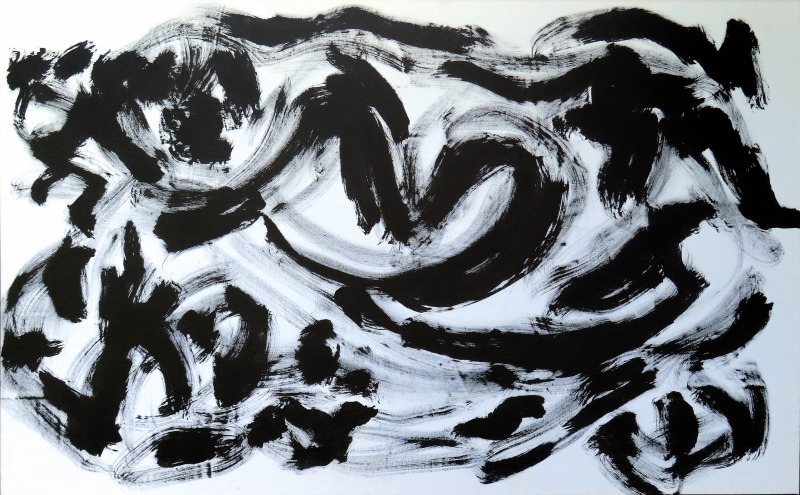
Different strokes
Hijjas, inspired by a multitude of sources, often draws from the lush forest garden surrounding his studio at Rimbun Dahan. His art, as demonstrated in works such as Letusan Daya (2023) and Api Nan Tak Kunjung Padam (2021), invites interpretation while simultaneously captivating viewers with dynamic brushwork that blends elements of calligraphy and drawing, blurring the line between abstraction and figurative expression. His work often reflects the vivid colours and visual effects inspired by the tropical rainforest and sun, as evident in Taman Indera Mambang (2023), a panoramic view in enamel paint.
Proud is an imaginative painter, as seen in his I Didn’t Write This Song (2023) charcoal and coffee work, where he plays with generous white space, three-dimensionality and graffiti-like strokes to create visual tension between suggestions of aerial views and flat abstraction. Each layer embodies his reflections on abstraction, urbanism and boundaries, culminating in paintings that traverse theoretical, practical and civic concerns to shape speculative and layered realities.
Dall, a formally trained sculptor with expertise in timber, honed his craft over six years of university education in Melbourne, Australia, and four decades of working with various materials, including concrete, brick and water. For this exhibition, he brings along his natural flair for mix and match and intertwines it with graffiti strokes and impressionist textures as observed in his new Empress Dowager series. The Empress Dowager He, Han Dynasty (2023) and Empress Dowager Wang, Tang Dynasty (2023) sculpted imperial portraits are brought to life in vibrant green and yellow hues and piercing eyes to boot. Also, not to be missed is 4SadArchitects+ (2023), which is an intimate group portrait of the architects.
Tampin boy Chong embraces the “one earth” principle as the cornerstone of his art. He elevates repurposed timber, recycled souvenirs and other discarded items, instilling them with cultural and historical significance. He achieves this transformation through a blend of collage, overdrawing techniques, and the use of on-site lighting to underscore the importance of our shared planet. In Mommy (2023), two orange elephant sculptures on a wood chip board not only provide inspiration but also symbolise the interconnectedness of all life on earth, casting shifting shadows as they journey from infancy to adolescence.
In his Homeless series, he meticulously depicts the profound impact of deforestation on tigers by shedding light on this critical issue through art. Each of Chong’s wood works can take months to complete. “I hope to create between eight and 10 pieces for this year’s show. The previous year, I managed six. Typically, my artwork tends to sell out quickly. Perhaps because it reflects the dedication and effort I invest in it. My art serves as a therapeutic outlet after a long day of work,” says the architectural director of Pentago.
chong_mommy_105x58cm.jpg
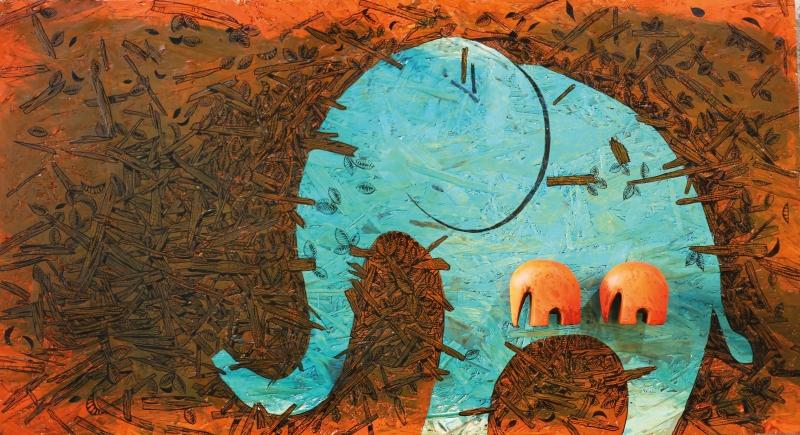
Duality duel
From the beginning of history, art has influenced architecture, and vice versa. “Architecture has been called the mother of all art because it draws a slew of media into its creation. Both architecture and visual art share the same principles of design, and therefore training in either one can give you background for the other,” explains Hijjas, who has played a pivotal role in shaping the architectural landscape in Malaysia.
“Architecture as a functional art form is more exacting and demanding than visual art. Architects have a legal responsibility and a code of ethics to which they must adhere. Painting, though, is a free form, allowing the artist to explore and experiment without considering the demands of law or practicality,” he adds.
Proud says his background in architecture has endowed him with the ability to face a blank canvas with unwavering determination, honed through years of tackling complex projects and tight deadlines. When asked how he finds balance between his work and painting, he replies: “I consider painting a liberating escape from work’s demands. Creativity is the lifeblood of design, whether in architecture or art. To nurture creativity, I prioritise clarity, integrity and perspective in my architectural designs, while my art thrives on spontaneous reactions. These two realms coexist harmoniously in my creative journey.”
“The challenges in architecture stem from the constraints imposed by government regulations, building bylaws and sometimes clients who want to exert control over the design process. In contrast, I experience complete freedom when I paint. There are no barriers or rules to contend with, allowing me to push the creative boundaries as far as I desire,” pipes in Dall, managing director and co-founding member of the Pentago Group of Companies.
Chong says the 28 years he spent in the architecture field has endowed him with three fundamental concepts — emotion, statement and experience — which he has seamlessly adapted into his paintings to ensure they are accessible to all, regardless of their socioeconomic status.
greg_dall.jpg
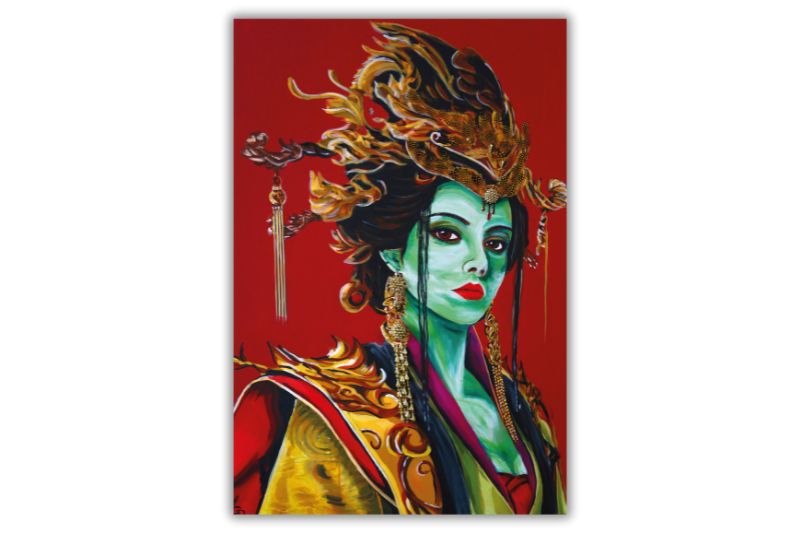
“I can feel the synergy of my architecture through my paintings as it gives me the freedom of expression. As with architecture, research and fulfilling exploration gives emotion, statement and experience to my paintings with each brush stroke of depth and complexity. In both worlds, creativity comes from research, playful experiments and being open to new ideas to redefine one’s creative limits. I have learnt that the final outcome or result is always never the final one.”
Despite rising demand and their heightened art productivity, all four of them confirmed that they have no intentions of giving up their full-time jobs in the near future.
Hijjas reflects on their diverse background and their long-standing involvement in arts and architecture, especially his own in the past 50 years. As a professor who still teaches and a purveyor of arts, he stresses the importance of contributing to the country and encouraging young talent as part of nation building. “The four of us work with a variety of artistic mediums. Chong, for instance, specialises in highly technical wood craftsmanship. At times, we each face challenges in conveying that our craft goes beyond mere painting or placing marks on a paper. This can be difficult due to the limited appreciation of art by the general public. Educating others about the depth of our work is a formidable task but a necessary one.”
Proud concurs, adding that people not only come here to receive good value for their money but also get educated. “We have talks for art and architecture students and that is our way of contributing to the community. And being here in this beautifully restored Pentago House definitely enhances the overall art experience,” he says, admiring the structure that was constructed in 1912 by Loke Yew. The only remaining pre-war shophouse in Kampung Attap now serves as a dynamic office and gallery that also functions as a community space that honours the area’s history, present and future.
This article first appeared on Nov 13, 2023 in The Edge Malaysia.


